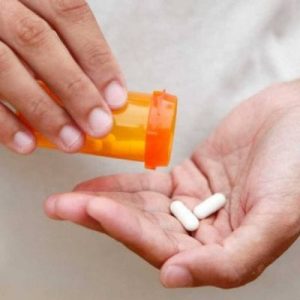Deemed the “miracle drug” in the 1940s, antibiotics has helped cure many infectious diseases, and they only work on infections by bacteria, not viruses. Overuse and misuse of antibiotics can result in the emergence of antibiotic-resistant strains of bacteria, which have their own slew of problems. Over the decades these tiny microbes have begun to evade the drugs used to kill them, leading WHO to declare: “The world is heading toward a post-antibiotic era, in which common infections and minor injuries, which has been treatable for decades, can once again kill.” Antibiotics are now overused not only in humans, but in livestock, and are even sprayed on crops, painted on the hulls of boats, and dumped in rivers. Adverse reactions, increased risk of diabetes and bowel cancer, gut damage, and disabling of the immune system are some of the risks of antibiotics.
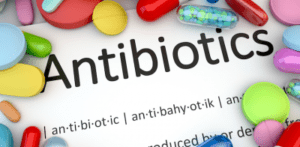 Before the beginning of the 20th century, the average life expectancy was 47 years, even in the industrialized world. Infectious diseases such as pneumonia, syphilis and smallpox were rampant. The discovery of penicillin in 1928 marked the beginning of a revolution against microbes that had assailed human health for centuries. (source)
Before the beginning of the 20th century, the average life expectancy was 47 years, even in the industrialized world. Infectious diseases such as pneumonia, syphilis and smallpox were rampant. The discovery of penicillin in 1928 marked the beginning of a revolution against microbes that had assailed human health for centuries. (source)
Discoveries of many new classes of antibiotics occurred during the antibiotic era. In the U.S., the leading cause of death became noncommunicable diseases, such as cardiovascular disease, cancer and stroke, as compared to communicable diseases, and the average life expectancy rose to 78.8 years. But overuse has led to a reduction in effectiveness.
The drugs that transformed life in the early 1900s now saturate concentrated animal feeding operations (CAFOs), and are offered to many who seek medical care with anything appearing like an infection. Antibiotics are also sprayed on crops, dumped in rivers with treated and untreated waste and painted on the hulls of boats to keep off barnacles.
Over the decades these tiny microbes have begun to evade the drugs used to kill them, developing into antibiotic-resistant pathogens estimated to cause at least 2 million infections annually, leading to 23,000 deaths each year in the U.S. alone. According to the World Health Organization:
“The world is heading toward a post-antibiotic era, in which common infections and minor injuries, which has been treatable for decades, can once again kill.”
Before antibiotics, alternative therapies were used to treat infections, although none was as reliably effective as antibiotics for severe infections. While critical for certain conditions, overuse has increased the risk of other diseases and contributed to the rising number of antibiotic-resistant pathogens.
Antibiotic Reactions Affect Tens of Thousands of American Children
Antibiotics transformed health care, but as with any foreign substance, they carry risks. When absolutely necessary, the benefits usually outweigh the risk. However, when they are used unnecessarily, the patient is often exposed to preventable and potentially serious health conditions.
Unfortunately, recent data show tens of thousands of children who take antibiotics end up in the emergency room as a result of immediate adverse reactions related to the drugs, to the tune of about 70,000 children each year.
Although these numbers sound high, pediatric infectious disease specialist Dr. Michael Russo believes this is only the tip of the iceberg, since the study only included children who went to the ER and not those treated in an urgent care, doctors’ office or at home.
According to data from the Centers for Disease Control and Prevention (CDC), 269 million prescriptions for antibiotics were written in 2015. The math reveals that for every 1,000 people, adults and children, there were 838 prescriptions written for antibiotics.
Data were compiled using nationwide estimates for outpatient prescriptions and a nationally representative sample of hospitals for emergency rooms visits for children younger than 19. The scientists found 86 percent of the children who were treated experienced an allergic reaction, including rash, angioedema (severe swelling beneath the skin) and pruritus (itching).
After analysis, researchers determined children aged 2 and younger had the highest risk of adverse drug events, and 41 percent of visits involved children in this age group. Amoxicillin was the most commonly prescribed antibiotic implicated in children age 9 or younger, while trimethoprim and sulfamethoxazole more commonly triggered reactions in children ages 10 to 19.
Data did not determine which prescriptions were unnecessary or inappropriate for the patient’s condition as that information was unavailable. However, the researchers note in their press release:
“Antibiotics are among the most commonly prescribed medications for children, but prior research has suggested that nearly a third, if not more, of outpatient pediatric prescriptions for antibiotics are unnecessary.”
Adverse Events From Antibiotics Affect Adults Too
Antibiotic prescriptions in outpatient settings actually declined by 5 percent between 2011 and 2014. However, when antibiotics are needed, the CDC found prescribers often favored potentially less effective drugs. They also found inappropriate use — including unnecessary use and inappropriate selection — dosing and duration, may actually approach 50 percent of all outpatient prescriptions.
A study from Johns Hopkins medicine found nearly 20 percent of adults prescribed antibiotics in the hospital experienced adverse side effects and nearly 20 percent of those side effects occurred in patients who didn’t need the antibiotics in the first place. This report only adds to growing evidence antibiotic use is not benign.
Dr. Pranita Tamma, director of the pediatric antimicrobial stewardship program at The Johns Hopkins Hospital, commented on the results:
“Too often, clinicians prescribe antibiotics even if they have a low suspicion for a bacterial infection, thinking that even if antibiotics may not be necessary, they are probably not harmful. But that is not always the case. Antibiotics have the potential to cause real harm to patients.
Each time we think to prescribe an antibiotic, we need to pause and ask ourselves, ‘Does this patient really need an antibiotic?’ If the patient develops an antibiotic-associated adverse reaction, even though that is, of course, unfortunate, we should be able to take some comfort in knowing that at least the antibiotic was truly necessary.”
Antibiotics Found to Raise Risk of Diabetes by 50%
“Those given five or more prescriptions over a period of up to 15 years are up to 53 per cent more likely to develop Type 2 diabetes [emphasis added]” as opposed to those given antibiotics “just once or never,” states a report by the UK’s Express.
“Evidence that bacteria in the human gut may influence nutrient metabolism is accumulating,” wrote the study’s authors, who published their findings in the Journal of Clinical Endocrinology & Metabolism.
The Denmark-based research tracked 170,404 patients with Type 2 diabetes and 1.3 million healthy people between January 1, 2000, and December 31, 2012, finding that the risk for developing diabetes was highest among those given antibiotics “that are effective against a narrow range of bacteria.”
“In our research we found people who have Type 2 diabetes used significantly more antibiotics up to 15 years prior to diagnosis compared to healthy controls,” explained the study’s lead author, Dr. Kristian Mikkelsen.
Unnecessary Use Contributes to Rising Antibiotic Resistance
For many years scientists have warned society is entering a preantibiotic era where easily-treatable infections will once again become deadly. Drug-resistant urinary tract infections and tuberculosis are already on the rise, as are several sexually transmitted diseases.
Global consumption of antibiotics continues to rise each year, driven in part by low- and middle-income countries. However, while the rates of antibiotics have not risen sharply in the U.S., they have also not fallen, suggesting efforts to scale back usage are failing. Exposure to antibiotics occurs also in food production, as CAFOs use nearly 80 percent of all antibiotics sold in the U.S.
The danger of using antibiotic in livestock is that it alters their gut microbiome. This is in part how the drug promotes unnatural growth. In the process, some of the animals’ gut bacteria become antibiotic-resistant. At this point, one of two things may happen: Either the drug-resistant bacteria are passed through the animals manure; or, the gut contents may contaminate the meat during slaughter or processing.
In this way, antibiotics used in meat production enters your food supply not only through the meat but also through the manure used as fertilizer on crops. At least two studies (EurekAlert! July 9, 2007, Journal of Agriculture and Food Chemistry, 2013;61(42):9992) have shown most vegetables grown in soil fertilized with manure will take up antibiotics into the plant tissue, and the greater the amount of antibiotics, the higher the level detected in the plant.
One study funded by the U.S. Department of Agriculture (USDA) found root crops, which are in direct contact with soil, are particularly prone to antibiotic contamination. Antibiotics such as oxytetracycline and streptomycin, used as pesticides primarily on fruit orchards and some vegetable crops, are also used in human medicine as well.
According to the CDC, antibiotic resistance is an urgent public health threat, and overuse is a major cause of increasing drug-resistant bacteria. Overuse and misuse threatens the usefulness of the drugs, as resistance can be deadly.
Damage From Antibiotics Not Limited to Immediate Side Effects
Lead author of the featured study, Maribeth C. Lovegrove from the CDC’s division of health care quality promotion, commented on the necessity for physicians to consider the results:
“By considering available data on the immediate risks to individual patients, clinicians, and parents and caregivers, can better weigh the risks and benefits of antibiotic treatment.”
However, while immediate adverse effects have consequences, they do not fully describe the long-term effects antibiotic use has on human health. Antibiotic resistance increases vulnerability to minor infections and may be linked to a host of problems in adulthood when antibiotics are prescribed as a child. Antibiotics account for 25 percent of all medications prescribed to children.
Research suggests these drugs have short- and long-term effects on the composition and health of your gut microbiome. As your microbiome plays a crucial role in your overall immune function and general health, it likely comes as no surprise that treatment with antibiotics raises children’s risk of developing infectious diseases, allergies, obesity and autoimmune disorders.
Senior study author Dan Knights, Ph.D., assistant professor at the University of Minnesota, commented on the correlation between antibiotic prescriptions and changes in gut microbiome as children grow into adulthood:
“Over the past year we synthesized hundreds of studies and found evidence of strong correlations between antibiotic use, changes in gut bacteria, and disease in adulthood … We think these findings help develop a roadmap for future research to determine the health consequences of antibiotic use and for recommendations for prescribing them.”
In a Danish study evaluating exposure to antibiotics during pregnancy, researchers found children who were exposed had a higher risk of developing a severe infection in the first six years of life. This risk was higher when mothers received the antibiotics closer to delivery, suggesting the antibiotics affected the woman’s gut microbiome.
Exposure to antibiotics in the first year of life is associated with up to a 15 percent increased risk of obesity, and observational studies have found use in pregnancy or infancy and later risk of asthma. Other studies have found an association with the development of Crohn’s and celiac disease, as well as juvenile idiopathic arthritis.
Bowel Cancer Rates Increase With Antibiotic Use
One study from Wyss Institute for Biologically Inspired Engineering at Harvard University revealed clinical levels of antibiotics increased oxidative stress leading to DNA damage. Researchers could prevent some of the oxidative stress using antioxidants to help protect the cells. This may be related to the discovery that antibiotic use in early adulthood leads to an increased risk of bowel cancer.
Antibiotics cause widespread damage to the gut, including blocking some immune function and destroying cells in the intestinal epithelium. A team of researchers discovered antibiotics affect a gene critical to communicating between the host and gut bacteria.
Disrupting this communication not only changes digestion, causing diarrhea and ulcerative colitis, but may also be linked to a change an immune function, obesity, food absorption, depression, sepsis and allergies. The team also found that when bacteria develops resistance to the antibiotics, it may cause a significant change in your body’s mitochondrial function and lead to more cell death. (source)
Protect Yourself Against Antibiotic Use
The health of your entire body is affected by your gut microbiome, which is why protecting your gut is critical. Purposely engaging in lifestyle choices to improve your gut health and avoid antibiotics will support your immune system, your emotional health and reduce your risk for obesity. Even a single dose of antibiotics can cause long-term gut damage.
- Increase fiber and reduce sugar — I believe about 50 grams of fiber per 1,000 calories consumed daily is an ideal amount to aim for, as fiber feeds your good bacteria and strengthens your gut microbiome. Vegetables are an excellent source of fiber and plant derived phytochemicals may reduce inflammation and regulate cell reproduction, reducing your risk for cancer. Sugar is the preferred nutrition for harmful bacteria, so reducing your net carbohydrate intake to 100 grams or below, and eliminating processed foods and white sugar, will support the growth of beneficial bacteria and strengthen your immune system.
- Fermented foods — These foods are an important tool for both gut health and disease prevention, including bowel cancer, as they are a rich source of beneficial bacteria and fiber.
- Avoid antibiotic-laden meat — While making choices, remember nearly all meat served in restaurants and airplanes is sourced from CAFOs where antibiotic use is rampant.
- Avoid personal antibiotic use — Unless your infection is bacterial and severe enough to warrant antibiotic use, it is wise to consider other options.
- Optimize your vitamin D level — Vitamin D deficiency is a risk factor for colorectal cancer. In one study, people with higher blood levels of vitamin D were less likely to develop colorectal tumors. Maintaining a vitamin D level between 60 and 80 ng/mL may also lower your risk of several other cancers, including breast cancer.
Antibiotics severely disable the immune system
The immune system, when working at maximum efficiency, is a miracle of nature, with the ability to prevent and heal virtually any disease, including cancer. What doctors call “diseases” are now known to be the experiential externalized symptoms of a condition arising from a compromised, ineffective immune system. All modern medicine ever attempts to do is mask the experiential symptoms of a disease without ever holistically healing the origin of the condition itself, and thereby without healing the disease, often causing even more harm to the patient through chemical medicines and invasive surgical procedures.
In most people today, the immune system is often already highly compromised through a poor diet and lifestyle, environmental toxins and other factors, including medicines. The immune system is highly complex, at least 80% being located in the digestive system and regulated by the “gut flora,” microbes, that live there in vast numbers. At least 15% of the weight of the entire body can be attributed to trillions of microbes and other organisms, living mostly in the digestive tract.
The ratio of “good” or “beneficial” microbes to “bad” or “pathogenic” microbes is absolutely critical to the efficient functioning of the immune system, being broadly 85% “good microbes” to 15% “bad microbes” in the gut. In most people, due to the previously mentioned factors, this ratio is severely skewed in favor of bad microbes, which in turn has the effect of seriously weakening the immune system.
This imbalance in the ratio of good to bad microbes is known as “dysbiosis.” When antibiotics are consumed, not only are the “bad microbes” killed off, so too are the good microbes, leaving the gut almost completely depleted of beneficial, immune response-regulating gut flora, and consequently a seriously compromised immune system as a whole. A weaker immune system due to antibiotics results in a body that is only more susceptible to disease and illness.
Taking antibiotics is therefore bad for health, because it effectively destroys the very natural bodily mechanism that protects us against all disease in the first place – the immune system – which may never fully recover by itself.
Repairing and maintaining a healthy immune system through diet
Natural is always best, and in the context of the immune system, this means through a natural, healthy, effective, gut flora-friendly diet. By far, the best foods and drinks to maintain a healthy gut flora balance, and therefore immune system, are foods containing “probiotics,” which, as the name suggests, are “pro” “good microbes” in the gut. Just one cup of probiotic food every day is extremely healthy in many ways, especially for the immune system and therefore as a safeguard against disease.
There are many examples of probiotic foods and drinks, including all fermented fruits and vegetables, kombucha tea and coconut kefir – and many others. These are all extremely healthy for maintaining the immune system and good health this winter, so that visit to the doctor never becomes necessary in the first place.
Source: Dr. Mercola
Chronological History of Events Related to Antibiotics
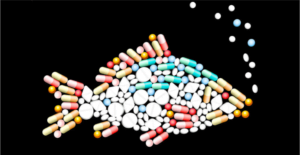
126 Species of Fish Contaminated With Cocktail of Pharmaceuticals

Romanian Pneumologist Summoned on Suspicion of “Malpractice” After Curing 1000 COVID Patients with 100% Cure Rate
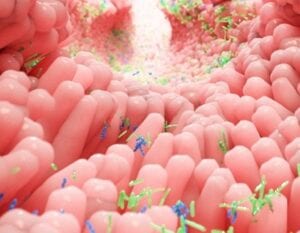
Gut Bacteria Is Key Factor in Childhood Obesity

Antibiotics: Even Low Use In Children Can Have A Negative Impact On Health – New Research
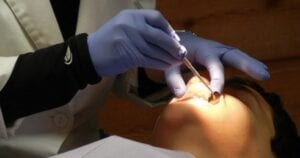
Study: 81% of Antibiotics Prescribed by Dentists ‘Unnecessary’
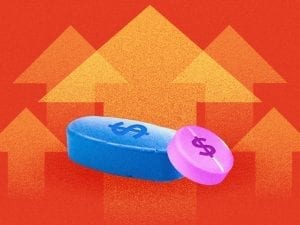
Huge Lawsuit Accuses nearly 20 Big Drug Companies, a Billionaire, and 2 Brothers-in-law of Cozying up to Hike Drug Prices

Study: Rebalancing the Gut Improves Symptoms of Autism
